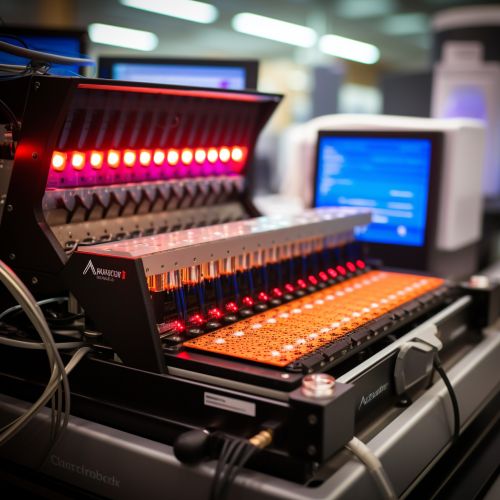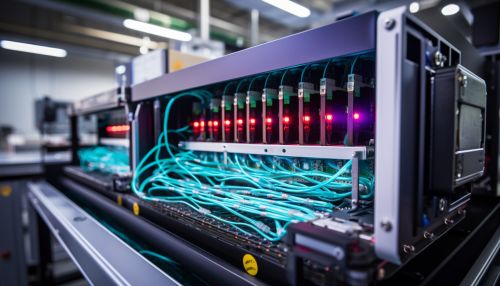Next-generation sequencing
Introduction
Next-generation sequencing (NGS), also known as high-throughput sequencing, is a term used to describe modern sequencing technologies that allow us to sequence DNA and RNA much more quickly and cheaply than the previously used Sanger sequencing method. These new technologies have revolutionized the study of genomics and molecular biology by providing high-throughput, scalable, and ultra-high-speed solutions.


History and Development
The development of next-generation sequencing technology has been driven by the need for high-throughput, cost-effective methods for sequencing DNA and RNA. The first NGS technology was introduced by 454 Life Sciences in 2005, which marked a significant milestone in the field of genomics. The technology was later acquired by Roche, and it paved the way for the development of other NGS technologies.
Principles of Next-Generation Sequencing
Next-generation sequencing involves three basic steps: template preparation, sequencing and imaging, and data analysis. The process begins with the preparation of a library of template molecules from the DNA or RNA samples to be sequenced. This is followed by the sequencing reactions, which are based on the detection of nucleotide incorporation events during DNA synthesis. Finally, the raw data is analyzed and interpreted to produce the sequence information.
Types of Next-Generation Sequencing
There are several types of next-generation sequencing technologies currently in use, each with its own strengths and weaknesses. These include:
Sequencing by Synthesis
Sequencing by synthesis (SBS) is a type of next-generation sequencing technology that involves the synthesis of a complementary DNA strand and the detection of incorporated nucleotides during the synthesis process. This method is used by several NGS platforms, including those developed by Illumina, Ion Torrent, and Pacific Biosciences.
Sequencing by Ligation
Sequencing by ligation (SBL) is another type of NGS technology that involves the ligation of oligonucleotides to a DNA template and the detection of the ligated oligonucleotides. This method is used by the SOLiD (Sequencing by Oligonucleotide Ligation and Detection) platform developed by Applied Biosystems.
Single-Molecule Real-Time Sequencing
Single-molecule real-time (SMRT) sequencing is a type of NGS technology that allows for the real-time observation of individual molecules as they are being sequenced. This method is used by the PacBio RS II and Sequel systems developed by Pacific Biosciences.
Applications of Next-Generation Sequencing
Next-generation sequencing has a wide range of applications in various fields of biological research and clinical diagnostics. These include:
Genomics
NGS technologies have revolutionized the field of genomics by providing high-throughput, cost-effective methods for sequencing whole genomes. This has enabled researchers to conduct large-scale studies of genomic variation and its role in health and disease.
Transcriptomics
NGS technologies have also been used extensively in the field of transcriptomics, which involves the study of the complete set of RNA transcripts produced by the genome. This has provided insights into gene expression patterns and their regulation.
Metagenomics
NGS technologies have been used in metagenomics studies to sequence the DNA of entire communities of organisms. This has allowed for the study of microbial diversity and function in various environments.
Epigenomics
NGS technologies have been used to study epigenomic modifications, such as DNA methylation and histone modification, which play a crucial role in gene regulation.
Future Directions
The future of next-generation sequencing is likely to be shaped by advances in technology that increase throughput, reduce costs, and improve accuracy. There is also a growing interest in the development of third-generation sequencing technologies, which aim to sequence single molecules of DNA or RNA without the need for amplification. These technologies have the potential to further revolutionize the field of genomics and molecular biology.
